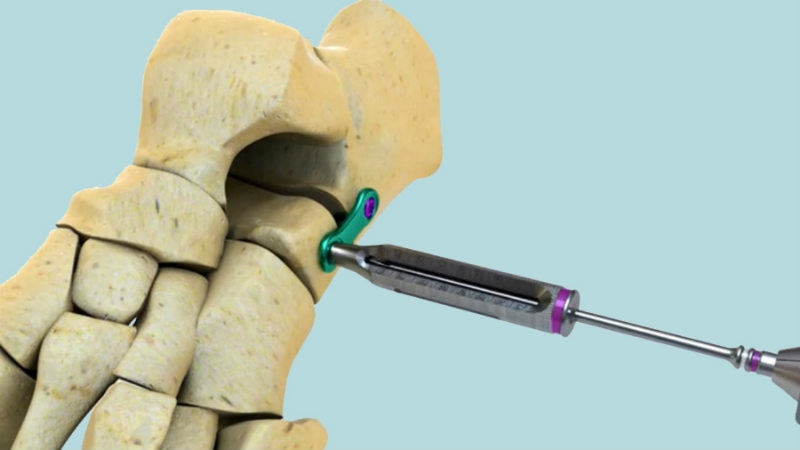
Healthcare Technology has been developing remarkably and surgeons performing osteotomy operations desire of effective and advanced medical equipment for performing immaculate surgeries. One such equipment is osteotomy plate. Osteotomy plates help with fixing impaired bones while attempting an osteotomy surgical procedure. A surgeon inserts plate and screws for holding bones in place until the osteotomy heals.
The incidence of bone-related diseases is growing rapidly due to bad diet or an unhealthy lifestyle. Secondly, the increasing road accidents, growing geriatric population, and express adoption of surgical procedures in diagnosing and treating bone-related diseases would collectively result in significant development and innovations in osteotomy plates manufacturing. The aging population is more vulnerable to physical and psychological issues which usually lead to bone diseases like arthritis. Furthermore, growing investments by healthcare and available market opportunities within developing regions are providing extensive opportunities for the growth of this industry. Osteotomy plates are available with various angles between the blade and the shaft. These plates are used for treating intertrochanteric osteotomy in adults. Application of different angled plates possesses a requirement of great care and careful planning. The plates remove the need for intraoperative contouring and curtail soft tissue irritation. Osteotomy plates have pointed ends which allow sub muscular plate insertion. Locking screws create a fix angle construct that provides stability in the angles.
Metal osteotomy plates
Metal osteotomy plates are employed for treating wide-ranging indications including fibular fractures, forefoot, and mid-foot fusion, deltoid avulsion, fracture, and for opening/closing wedge anatomic plates. Anatomical locking metal block plates are being designed specifically for medial open wedge high tibia uniplanar osteotomy. Studies are showing that the new anatomical locking metal block plate is providing sufficient primary stability. The introduction of a metal block to the new plate can enhance the stability of osteotomy in comparison to the one which is performed without a metal block. Two prominent categories of metal osteotomy plates are used in clinical practice: Titanium and Stainless steel.
Stainless steel osteotomy plates
Currently, stainless steel osteotomy plates are being manufactured indigenously. Along with being economical, these plates are also easily available. A variety of stainless steel plates including revolutionary implant and anchors system for osteotomies of the lower extremities are available in the market. The adoption of these industry fuelling fixation systems, when used with procedure-oriented instruments, offer the surgeons a safe, dependable, and reproducible approach for distal or proximal tibia and distal femoral osteotomies.
Titanium osteotomy plates
Titanium plates were designed to be anatomically curved and low profile. These plates are available in straight, wedge less, and sloped option. Some titanium osteotomy plates are designed in a way that they are available with either a straight or sloped tooth to change or preserve the native tibia slope. In comparison with stainless steel plates, these plates produce a less soft-tissue reaction. Titanium is a promising material for internal fixation devices.
Polymer osteotomy plates
Polymer osteotomy plates are witnessing maximum adoption across the healthcare sector majorly due to the prevailing osteoporosis, increasing geriatric population, and advancements in technology used in polymer osteotomy plates.
Why use osteotomy plates?
The use of osteotomy plates is sustainable in the fixation of opening-wedge high tibia osteotomy as they provide an adequate amount of stability to preserve the achieved correction until consolidation, without noteworthy changes. Fixation with osteotomy plates is consistent and delivers steady correction and the option for early weight-bearing. By allowing micro movements, the elasticity in titanium plate facilitates unification at the osteotomy site. Moreover, spacers place the plates 2 mm away from the bone, which helps in preserving periosteal vascularization.
Future Prospects
Combination of osteotomy plates and 3D printing technology could be the future of osteotomy plates market. Modern surgical procedures encompassing high tibia osteotomy plates are often referred to as the surgeries with low overall accuracy, in terms of the targeted angles. It emphasizes the increasing connotation of high accuracy of modern surgeries. 3D printing technology emerging as a striking option for coupling with high tibia osteotomy, with an objective to achieve loftier results after the surgery with additional benefits of improved accuracy. Ongoing research and development studies are determined to explore the feasibility and clinical efficiency of the joint procedure. The success of this innovation holds the assurance of lifting the capability of conventional osteotomy surgeries; thereby, boosting the demand for cutting-edge technology high tibia osteotomy plates in the near future.
Full Report: https://www.kbvresearch.com/osteotomy-plate-market/
Click Here For Free Insights: https://www.kbvresearch.com/news/osteotomy-plate-market-size/